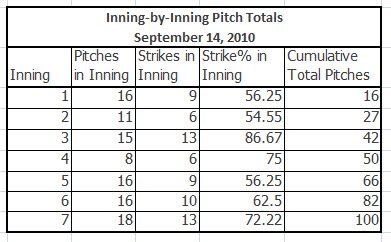Indians baseball of the late 1990's and early 2000's will long be remembered as one of the most exciting periods of baseball in the city of Cleveland. Any fan can wax poetic for hours about any number of subjects about those teams, the incredible talent brought up througth the minor leagues, important veterans signed to add experience to the roster, free agent signings to bolster the team, or the nearly 20 million fans attending games between 1995 and 2001 including 455 straight sellouts. But ast the old saying goes, all good things must come to an end. The Cleveland Indians finished 2001 with a record of 91-71 and were matched up against the Seattle Mariners who were coming off a record setting 111 win season. The series would come down to a deciding fifth game and would see Jamie Moyer shut down the Indians offense and the Mariners walk away with a 3-1 victory.
For many of the Indian faithful, the period of baseball from 2000 to 2002 marks the shift from the penthouse to the outhouse and conincides with the purchase of the team by Larry Dolan from Dick Jacobs and the departure of John Hart marking the beginning of the Mark Shapior tenure as G.M. Right in the middle of the transition from the penthouse to the outhouse, the organization felt it was time to move away from a manager that the fans of Cleveland could relate to in Charlie Manuel to a manager who never was endearing to the fanbase in Eric Wedge. In the offseason following the loss to the Mariners, John Hart would resign as General Manger and be replaced by Mark Shapiro who would quickly dispatch Roberto Alomar off to the NY Mets. As the year dragged on the team would continue their transition by dealing Bartolo Colon and Chuck Finley for prospects. The Indian fans were either livid or apathetic after seeing Jim Thome leave via free agency in the offseason following the 2002 season (a discussion of who to blame is just as polarizing in 2010 as it was in 2002).
The remnants of the 2001 season were not all negative as the Indians had developed a future ace in CC Sabathia. As a 21 year old Sabathia would go 17-5 in 2001 and be a beacon of hope for the fans. Like the 1990-1993 teams, the Indians would begin to bring in ptichers from other organizations via trade or free agent signings and bring young arms up from the minor leagues in an attempt to build the foundation of another club that could return to the playoffs. The starting pitchers used by the Tribe, including the number of starts by each player, are included in the table below.
Several of these pitchers were called up from the Tribes minor league system. These pitchers were the group that the Tribe had hoped would take spots in the rotation and lay the foundation of the pitching staff, which along with CC Sabathia would be able to return the Tribe to the postseason. The table below shows the Tribe's young arms and how they fared in their first 10 major league starts.
Out of this group the Tribe found a future Cy Young Award winner in Cliff Lee and a solid complement to Sabathia and Lee in Jake Westbrook. The 2005 season would see the Cleveland Indians eliminated on the final day of the season despite winning 93 games. The Indians would only use 6 starting pitchers during the 2005 season. Cliff Lee would win 18 games for the Tribe, CC Sabathia and Jake Westbrook would each win 15 games, and vetran reclamation projects Kevin Millwood would win the AL ERA Title. CC Sabathia, Jake Westbrook, and Cliff Lee would lead the Tribe to the AL Championship Series in 2007.














